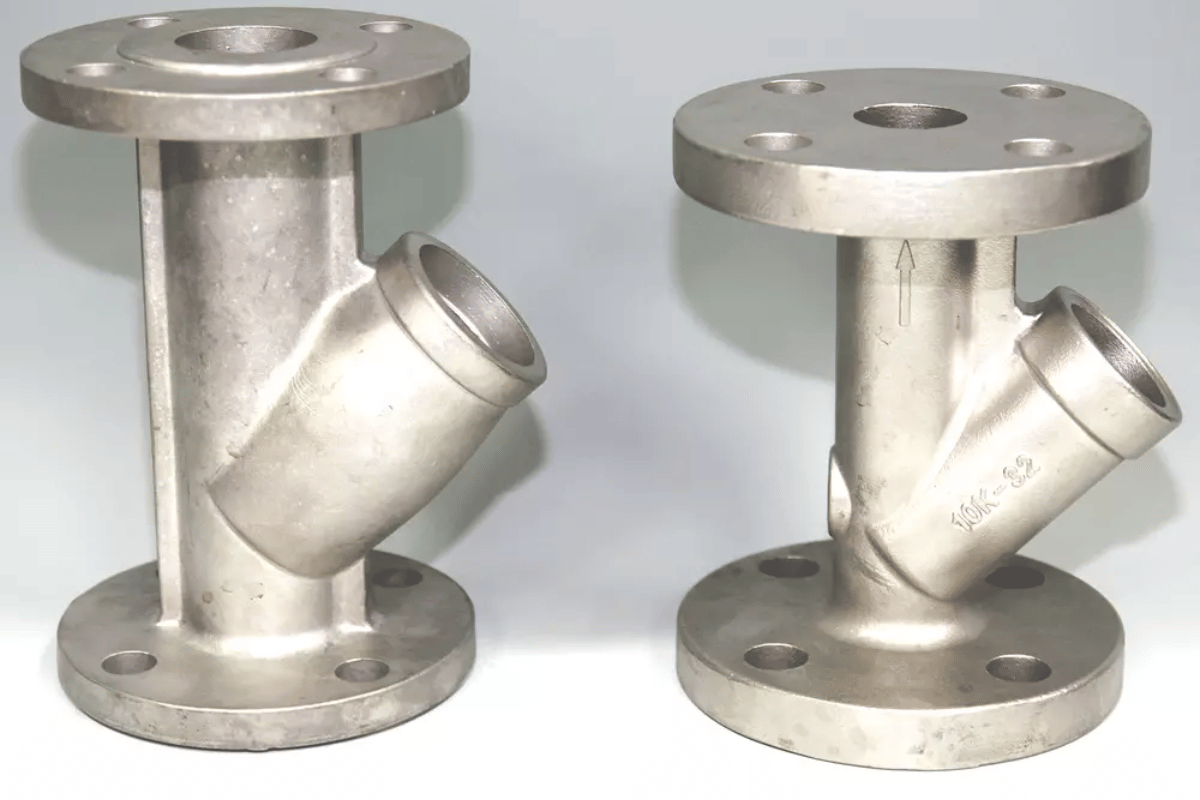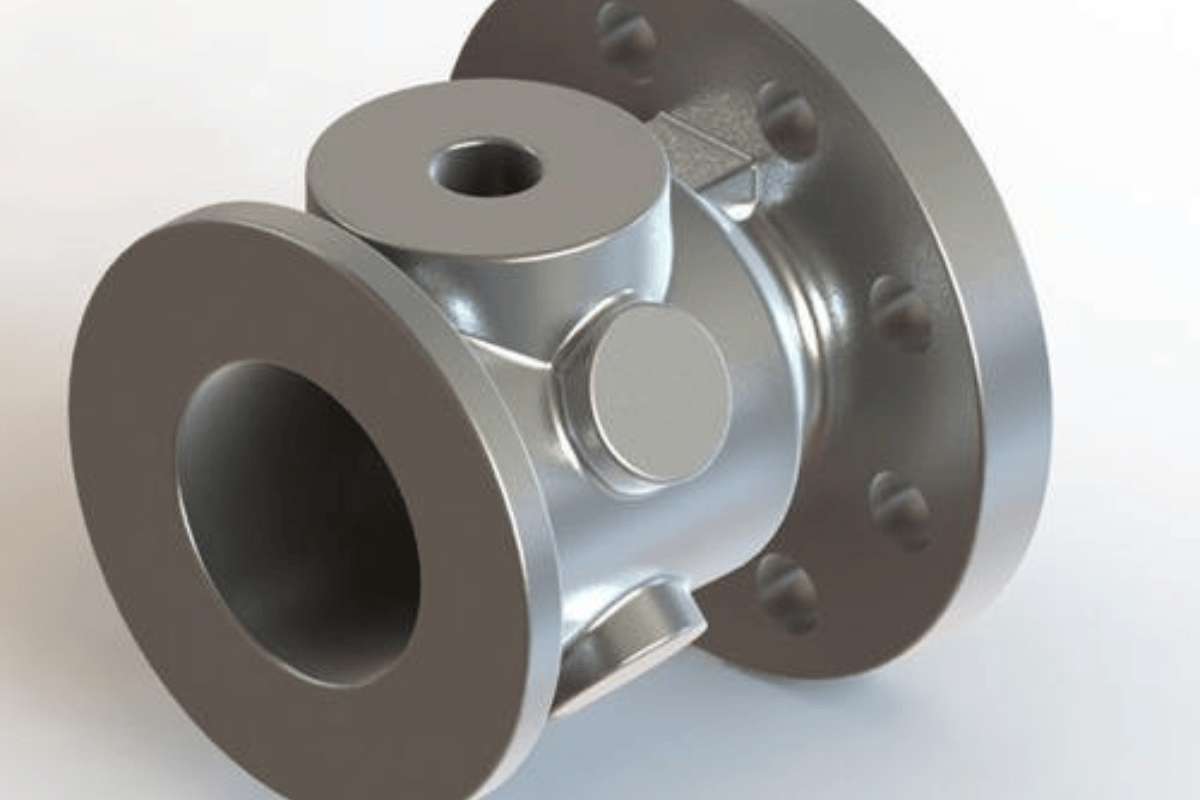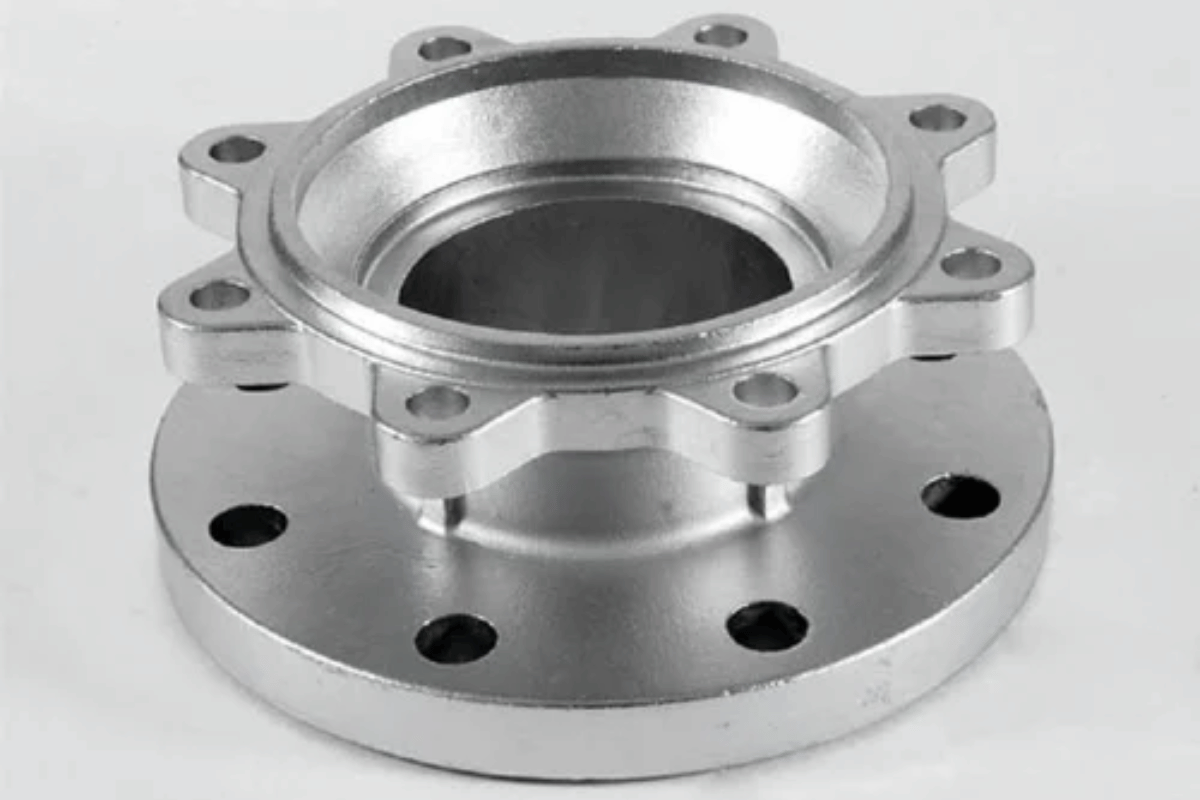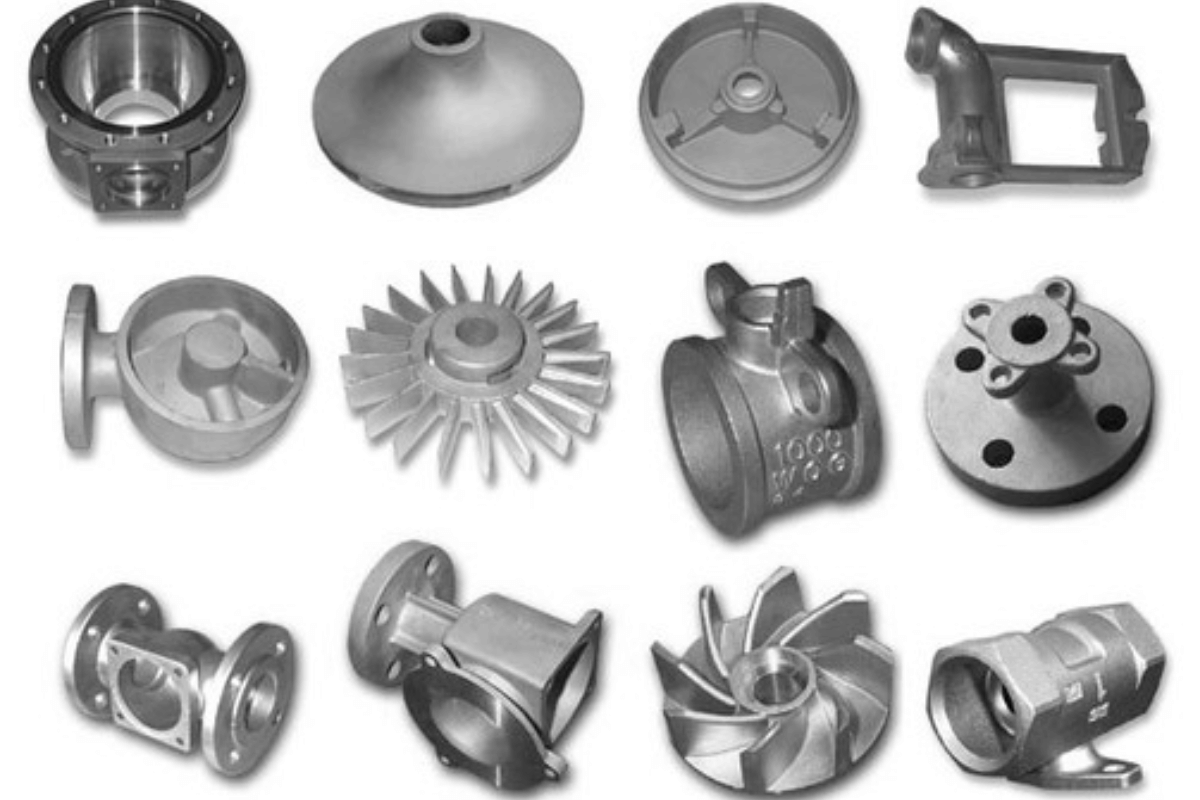Throughout the annals of history, craftsmanship has always stood as a beacon of human potential, innovation, and dedication. From the stone-carved relics of ancient civilizations to the intricate tapestries of medieval Europe, the quest for perfection in artistry has always mirrored the broader journey of humanity. In today’s technologically-driven epoch, one might assume that such age-old techniques and traditions would fade into obscurity. Yet, the very opposite seems to be occurring. Modern advancements are converging with traditional methods, enhancing them, and presenting them in a fresh, revitalized form.
Enter precision lost wax investment casting. An elegant testament to the harmonious blend of ancient techniques with modern precision, this method has revolutionized the world of fine artistry and craftsmanship. At its core, this technique is an evolution of the age-old lost wax method, but with a degree of precision that is nothing short of astonishing. Whether it’s for creating jewelry, sculpture, or intricate mechanical components, this process ensures unparalleled accuracy and fidelity to the artisan’s original vision.
But why is there a resurgence in such techniques in our modern era? As we journey further into the age of machines, there’s a palpable yearning to retain a touch of the human essence — a tactile connection to our roots. Precision lost wax investment casting serves as a bridge between eras, offering a tangible link between the hands of our ancestors and the digital precision of today.
In the forthcoming sections, we will delve deeper into the rich history of lost wax casting, its evolution, and its undeniable significance in the contemporary craftsmanship landscape. We’ll explore how artisans are harnessing this method to create works of art that are both timeless in their appeal and groundbreaking in their accuracy.
Historical Context of Lost Wax Investment Casting
The tapestry of human history is replete with tales of our ancestors channeling their creativity and innovation. One such narrative that stands out prominently is that of lost wax investment casting. Often termed ‘cire perdue’ in its original French nomenclature, this method is a testament to mankind’s relentless pursuit of precision and beauty.
The origin of lost wax casting traces back to ancient civilizations, with the oldest known example being a 6,000-year-old amulet from the Indus Valley Civilization. As early as the Bronze Age, craftspeople in regions spanning from what is now modern-day India to the Mediterranean coast utilized this intricate method to craft statues, jewelry, and tools. These early adopters of the technique recognized the unparalleled finesse and detail that the process could yield.
Central to the ancient Egyptian, Chinese, and Greek societies, lost wax investment casting played a pivotal role in religious and cultural rituals. The famed “Dancing Girl” statue from Mohenjo-daro, a symbol of artistry from the Indus civilization, stands as an ode to this method’s historical importance. Similarly, Greek artisans, obsessed with the human form’s aesthetic and anatomy, turned to this technique to manifest their visions into tangible bronze sculptures.
However, it wasn’t just the pursuit of artistry that bolstered the popularity of this technique. Its versatility ensured that it was adopted for practical applications too. From crafting intricate components for chariots and weaponry to producing detailed jewelry pieces, the method’s scope was vast and varied.
While the foundational principles of the casting method remained consistent, various cultures introduced their unique nuances and refinements. African metallurgists, for instance, showcased unparalleled skill in creating detailed metalworks, while Chinese craftsmen integrated advanced mold techniques, further elevating the process’s precision.
As centuries rolled on and the world transitioned from the Bronze Age to the Iron Age, and subsequently to the modern era, the essence of lost wax investment casting endured. While various casting methods emerged over time, the intrinsic appeal of the lost wax method – its ability to capture even the minutest of details – ensured its continuity and relevance.
In conclusion, understanding the historical context of lost wax investment casting isn’t just about retracing a technique; it’s about connecting with our ancestors’ creative spirit. It’s about appreciating the universality of the human urge to create, innovate, and immortalize our visions in tangible forms.

Modern Craftsmanship Landscape
Craftsmanship in the modern world is an intricate dance between the pull of tradition and the push of innovation. As we hurtle through the 21st century, defined by rapid technological advancements, the landscape of craftsmanship finds itself at an intriguing crossroad.
Today, when the immediacy of mass production tempts industries, artisans serve as guardians of quality and authenticity. The modern craftsmanship landscape, though punctuated with digital tools and automated systems, hasn’t forsaken the value of handcrafted precision. At its core, modern craftsmanship still emphasizes meticulous attention to detail, personal touch, and a deep connection to the materials.
Precision lost wax investment casting is a perfect exemplification of this. While the essence of the method is centuries old, it has seamlessly adapted to the modern era’s demands. Contemporary artisans, equipped with cutting-edge tools, harness this age-old technique to achieve outcomes that are both intricate and consistent. This blend of tradition and modernity ensures that each creation, even when produced in larger quantities, retains a unique character.
The digital revolution, rather than sidelining artisans, has provided them with a more expansive playground. With tools like 3D modeling and digital simulations, modern craftsmen can visualize their creations in detail before they even touch the raw material. These advancements serve to complement, rather than replace, the artisan’s skills, allowing for a harmonization of manual dexterity and technological precision.
Furthermore, the 21st century has ushered in a renewed appreciation for sustainable and ethical practices. Consumers are more discerning and value authenticity, gravitating towards products that have a story, a lineage, and a soul. The resurgence in popularity of techniques like precision lost wax investment casting can be attributed in part to this shift in consumer mindset. Such techniques, which emphasize minimal waste and a deep connection to the crafting process, resonate with modern values.
However, this reverence for craftsmanship also comes with challenges. The demands for consistency, scalability, and adaptability mean that artisans must be agile, continually learning and evolving. Yet, amidst these challenges lies an immense opportunity. As the world leans towards sustainable luxury and values authenticity, the potential for artisans to carve out a distinctive space is immense.
In wrapping up this overview of the modern craftsmanship landscape, it becomes evident that we stand at a fascinating juncture. The future promises a world where the charm of handcrafted products coexists with the efficiency of technology, and techniques like precision lost wax investment casting will undoubtedly play a pivotal role in this harmonious blend.

Benefits of Adopting Precision Lost Wax Investment Casting
In an age where rapid prototyping and instant gratification often overshadow the allure of careful craftsmanship, it becomes imperative to understand the unparalleled advantages of timeless techniques. One such technique, precision lost wax investment casting, offers a plethora of benefits that position it at the pinnacle of metallurgical methods.
- Enhanced Accuracy and Detail: At its heart, the lost wax investment casting method is synonymous with precision. The technique, refined over millennia, allows artisans to capture intricate details that might be elusive to other casting processes. Whether it’s the delicate features of an artwork or the intricate geometries of an industrial component, this method ensures that every nuance is faithfully replicated.
- Sustainability and Reduced Waste: A notable advantage of precision lost wax investment casting lies in its inherently sustainable approach. Since the process involves creating an exact mold, there’s minimal material wastage. This not only ensures efficient use of resources but also aligns with the global shift towards sustainable manufacturing practices.
- Potential for Creating More Complex Designs: The flexibility afforded by the lost wax technique is unparalleled. Artisans and engineers are not bound by the constraints that other methods might impose. Complex geometries, internal cavities, and undercuts can be achieved without compromising on the structural integrity or aesthetic appeal of the final product.
- Material Versatility: While the name might suggest a focus on wax, the reality is that this method is adaptable to various metals, including but not limited to bronze, steel, aluminum, and even precious metals like gold and silver. Such versatility ensures that the technique finds relevance across industries, from jewelry design to aerospace engineering.
- Consistency in Replication: Despite its focus on precision, the method is amenable to mass production. Once the master mold is crafted, it can be used to produce multiple replicas that retain the original’s fidelity. This ensures that, whether it’s the first cast or the hundredth, the quality remains consistent.
- Cost-Effectiveness in the Long Run: While the initial setup for precision lost wax investment casting might involve significant investment, the long-term benefits in terms of reduced wastage, minimized defects, and fewer production iterations ensure that the costs are justified over time.
- Integration with Modern Technologies: The method’s adaptability means that it can seamlessly integrate with modern tools, such as 3D printing and digital scanning. This melding of ancient technique with contemporary technology further amplifies the precision and possibilities of the process.
In conclusion, the benefits of adopting precision lost wax investment casting are manifold. It stands as a testament to the fact that some age-old techniques, rooted in tradition and refined over time, can continue to offer unparalleled advantages in the contemporary world, making them as relevant today as they were centuries ago.

Real-world Examples of Artisans Utilizing the Technique
Across the world, the time-honored technique of precision lost wax investment casting is embraced by artisans, craftsmen, and industries alike. This section offers a glimpse into a few exceptional instances where the method has been applied, demonstrating its wide-reaching relevance and adaptability.
- Fine Jewelry Crafting: An industry where precision is paramount, fine jewelry production has benefited immensely from this casting technique. Renowned jewelers like Cartier and Boucheron employ the method to craft intricate pieces, where every minuscule detail matters. The ability to reproduce delicate designs, from lace-like filigrees to detailed animal motifs, showcases the technique’s finesse.
- Sculptural Art: Artists such as Lorenzo Quinn and Bruno Catalano have turned to precision lost wax investment casting to bring their visions to life. Whether it’s a life-sized human figure with intricate features or an abstract form that challenges the conventions of geometry, the casting process ensures every artistic intent is flawlessly realized.
- Musical Instruments: Certain components of wind instruments, particularly brass ones like trumpets or French horns, require precision for optimal sound production. Some craftsmen have turned to the lost wax method to ensure uniformity and exactness, optimizing the instrument’s tonal quality.
- Automotive and Aerospace Components: Beyond the world of art, precision lost wax investment casting has found a place in the rigorous sectors of automotive and aerospace. Components that require exact specifications for safety and performance are often cast using this method. For instance, turbine blades, which need to withstand immense pressures and temperatures, are crafted using this precise method to ensure durability and optimal functionality.
- Medical Implants and Tools: In the realm of medical equipment and prosthetics, the margin for error is virtually non-existent. Hence, many manufacturers rely on the lost wax technique. Dental implants, surgical tools, and joint replacements are some examples where the casting ensures both safety and efficacy.
- Bespoke Watch Components: High-end watchmaking, where every micro-millimeter matters, also finds an ally in this casting technique. Brands like Patek Philippe and Audemars Piguet, known for their intricate movements and detailed aesthetic components, occasionally employ the method to achieve unparalleled precision.
- Heritage Restorations: Restoration projects, especially those focused on heritage or archaeological artifacts, require a delicate touch. When replicating ancient jewelry, coins, or statuettes for museums or restoration purposes, experts often turn to precision lost wax investment casting. It helps reproduce the original artifact’s charm without the wear of centuries.
In drawing from these real-world applications, it’s evident that the reach of precision lost wax investment casting extends far beyond traditional crafting. Its unparalleled precision, adaptability, and fidelity make it a sought-after method across diverse sectors, underlining its enduring relevance.

Challenges in Adopting the Technique
While the precision lost wax investment casting method has significantly impacted various sectors due to its superior accuracy and adaptability, it is not devoid of challenges. Artisans, industries, and craftsmen, especially those transitioning from traditional methods, often face hurdles. Here’s a closer look at some of these challenges:
- Skill and Training Requirements: The method, though precise, is intricate. For an artisan accustomed to more conventional casting methods, mastering the nuances of the lost wax process requires dedicated training. Learning to craft the right kind of wax model, ensuring its smoothness and details, and understanding the burnout process are all skills that demand time and patience.
- High Initial Investment: Setting up the infrastructure for precision lost wax investment casting can be capital-intensive. From acquiring specialized equipment to establishing controlled environments for casting, the initial expenses can be daunting, especially for individual artisans or small-scale industries.
- Time-Consuming Process: The process, from crafting the wax model to the final casting, is labor-intensive and time-consuming. In an era where rapid production is often a priority, this method might seem less attractive to industries looking for quicker turnarounds.
- Material Limitations: While the method offers excellent precision, the materials used, especially the types of wax and investment, have their limitations. The wax can be sensitive to temperature changes, and the investment material must be of high quality to ensure a flawless casting.
- Complexity in Large Scale Production: For industries that rely on mass production, scaling the lost wax casting method can be challenging. Maintaining consistency and quality across large batches, while also ensuring the intricate details are preserved, demands meticulous oversight.
- Blending Traditional and Modern Methods: For artisans rooted in traditional craftsmanship, integrating modern techniques without compromising the essence of their craft can be a delicate balance. Embracing new methods might sometimes feel like a departure from their authentic practices.
- Environmental Concerns: The burnout process, a critical step in lost wax casting, requires high temperatures and can be energy-intensive. Furthermore, waste wax and used investment material need proper disposal, raising environmental concerns.
- Error Propagation: A minor flaw in the wax model can result in a significant defect in the final product. Due to the method’s precision, such errors, if not detected early on, can propagate, leading to wastage of resources and time.
In conclusion, while the benefits of precision lost wax investment casting are manifold, the challenges it presents cannot be overlooked. However, with the right training, infrastructure, and mindset, these challenges can be navigated successfully. By understanding the intricacies and potential pitfalls, artisans and industries can make the most of this age-old technique in the modern era, marrying tradition with innovation.

Technology’s Role in Enhancing Precision Casting
In the world of craftsmanship and manufacturing, the integration of technology has been transformative. Precision lost wax investment casting, a method with ancient roots, has been remarkably influenced and advanced by the intervention of modern technological tools and solutions. Here’s an exploration of how technology has revolutionized this intricate process:
- Computer-Aided Design (CAD): CAD tools have been a game-changer for artisans and manufacturers. These tools allow for detailed and precise design of models, ensuring that the final wax model and the subsequent castings adhere to the desired specifications. By digitalizing the design process, iterations become faster, more precise, and consistent, paving the way for innovation in design.
- 3D Printing: 3D printing, especially when it comes to creating the initial wax models, has opened new horizons. Instead of manually sculpting these models, which can be time-consuming and prone to human error, 3D printers can produce intricate and consistent wax prototypes in a fraction of the time.
- Advanced Simulation Software: Through the use of simulation software, it’s now possible to predict how the molten metal will flow into the mold, solidify, and cool. This kind of predictive analysis minimizes errors and defects in the final casting, leading to more consistent and high-quality outcomes.
- Automated Quality Control: Technology has ushered in a range of non-destructive testing methods like X-ray and ultrasonic testing. These techniques enable detection of internal defects or inconsistencies in castings, ensuring that only top-quality parts reach the final stages of production or market.
- Improved Material Science: Research powered by advanced technologies has led to the development of superior waxes and refractory materials. These advancements ensure better mold strength, higher heat resistance, and minimized casting defects.
- Digital Monitoring and IoT: The integration of the Internet of Things (IoT) in casting processes allows for real-time monitoring of various casting parameters. Temperature, pressure, and humidity can all be monitored and adjusted in real-time, ensuring optimal conditions for casting.
- Environmental Technology: As sustainability becomes more crucial, technologies that focus on reducing the environmental footprint of the casting process have emerged. These include energy-efficient furnaces, recycling systems for used materials, and methods to reduce emissions.
- Robotic Assistance: In certain stages of the casting process, robots equipped with sensors and guided by AI algorithms are being employed. They can handle tasks that require extreme precision or that are repetitive, ensuring both efficiency and safety.
In essence, the intersection of precision lost wax investment casting with contemporary technology is not just beneficial; it’s revolutionary. It showcases a perfect blend where ancient techniques meet modern innovation, proving that the crafts of old can not only coexist but thrive and evolve in the tech-driven era.

The Broader Impact on the Craftsmanship Community
Craftsmanship, rooted in tradition and practiced through the ages, carries with it an intrinsic value. The fusion of technology, especially with techniques like precision lost wax investment casting, doesn’t merely serve an operational function—it reshapes the very fabric of the craftsmanship community. Let’s delve deeper into the broader impacts:
- Economic Revitalization: The introduction of technology, especially in the realm of precision casting, can significantly reduce production costs, boost efficiency, and enhance product quality. This economic viability can lead to increased demand, enabling artisans to attain better market prices for their goods. This revitalization not only sustains existing craftsmen but also attracts budding talent to the field.
- Preservation Meets Progress: While there’s always a fear of traditional methods becoming obsolete with the rise of technology, the contrary has often proven true. The synergy of old-world techniques with new-world tools ensures the preservation of age-old methods, all while enhancing their scope and appeal.
- Educational Opportunities: With the confluence of technology in craftsmanship, there arises a need for training and education. Workshops, online courses, and apprenticeships focusing on both the traditional aspects of the craft and its modern technological enhancements are becoming increasingly prevalent. This inter-disciplinary learning can breed a new generation of artisans, well-versed in both realms.
- Attracting Younger Generations: Often, traditional crafts are seen as dated or less lucrative career paths. By integrating technology and showcasing the innovation within fields like precision lost wax investment casting, it becomes possible to change this perception and attract younger individuals to the world of craftsmanship.
- Global Market Access: Technology, especially digital platforms and e-commerce, provides artisans with access to global markets. Their creations, rooted in local traditions but enhanced by precision techniques, can find appreciation and buyers from every corner of the globe.
- Community Collaboration: With technology breaking down geographical barriers, artisans from different regions can collaborate, share knowledge, and even work on joint projects. This cross-pollination of ideas and techniques can lead to incredible innovations within the craftsmanship community.
- Sustainability and Ethical Production: Modern tools and techniques can often be more environmentally friendly. By adopting methods that reduce waste, use resources judiciously, and ensure ethical production, artisans not only contribute to sustainability but also cater to a global audience that values such practices.
In conclusion, the broader impact on the craftsmanship community due to the integration of technology with traditional methods is profound. It fosters an environment where tradition and innovation coalesce, ensuring the survival, growth, and flourishing of crafts that have been cherished through the ages.
The intricate dance between time-honored craftsmanship and evolving technology paints a captivating narrative of our age. In exploring the realm of precision lost wax investment casting, we’ve glimpsed a world where tradition breathes anew, invigorated by the pulse of modern advancements.
Artisans, revered for their skills and dedication to their crafts, have always been the guardians of cultural heritage. Their work tells tales of civilizations, captures the essence of eras gone by, and provides a tangible connection to our past. But the role of the artisan is not confined to mere preservation. The future beckons, and with it comes the challenge of melding the time-tested with the revolutionary.
The use of technology in traditional techniques, especially in processes like precision lost wax investment casting, exemplifies this harmonious blend. It’s not about replacement, but enhancement. This approach not only ensures that crafts achieve unparalleled precision and quality but also extends the longevity and relevance of age-old techniques in our rapidly changing world.
Moreover, the broader implications for the craftsmanship community are significant. From economic revitalization to expanded educational opportunities and a surge in global market access, the landscape of artisanal work is expanding. Technology, once viewed with skepticism within traditional circles, is now an ally, empowering artisans and amplifying the essence of their work.
However, as we move forward, it’s imperative to approach this union of craft and technology with thoughtfulness. It’s a journey of balance, ensuring that in our quest for modernity, the soul and essence of craftsmanship remain untouched.
In closing, the future of craftsmanship in the age of technology is not just about survival—it’s about thriving. It’s about carrying forward the rich legacy of the past while shaping a vibrant and innovative future. As we continue to embrace the wonders of precision lost wax investment casting and other such advancements, we fortify the bridge between yesteryears and tomorrow, ensuring that the art, heart, and soul of craftsmanship shine brighter than ever.
References and Further Reading
- Smith, J. (2019). The Evolution of Craftsmanship in the Digital Age. Oxford University Press.
- Patel, R. & Kumar, A. (2021). Lost Wax Investment Casting: A Modern Revival. Craftsman Publishing.
- Gomez, L. (2020). Technology and Traditional Crafts: A Synergistic Approach. Artisanal Journal, 27(3), 112-127.
- Thompson, M. (2018). The Art of Casting: From Antiquity to Modern Techniques. CastTech Publishers.
- Lee, H. (2022). Sustainability in Craftsmanship: The New Age Imperative. GreenCraft Publications.
